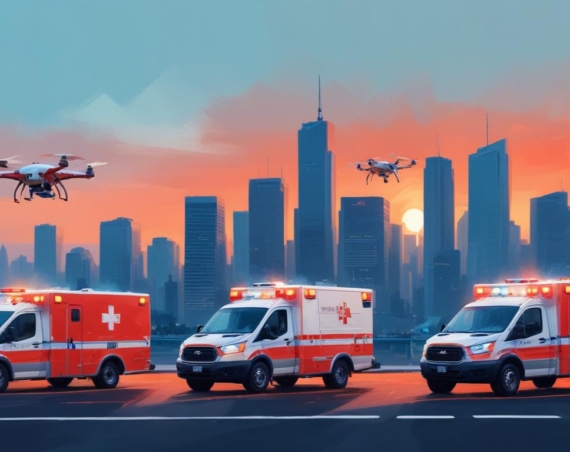
There are some exciting things happening in the field of radiology, with technological advances paving the way for improvements in the field, which means better service to patients. With enhancements to tools and equipment that provide medical imaging, it will be far easier and quicker to diagnose diseases and develop plans for treatment. There are many different types of radiology available to today’s physicians, including some which use no electromagnetic radiation whatsoever.
The types of radiology that do use radiation include fluoroscopy, nuclear medicine, positron emission tomography, and computed tomography. With the advanced state of radiology today, and the promise of even better procedures in the future, it will be possible to use minimally invasive medical procedures guided by various imaging technologies like those mentioned above.
In this article, we’ll discuss how technological advances have made it possible for radiology to become even more useful to patients and medical professionals, so as to achieve the best possible patient outcomes. In addition, there are now many colleges with a Radiology program, so students studying to become doctors or healthcare professionals will have greater access to modern technology and improved techniques for radiology.
Advanced Intervention Radiology
Every year, the demand for advanced intervention radiology increases in this country and around the world in general. That means more doctors must be trained to use these techniques to their advantage, so patients can receive the kind of care they’re entitled to. As one good example, there is a movement in place to expand care for stroke thrombectomy.
It’s also true that the National Institute for Health and Care Excellence has recommended that men with enlarged prostates undergo artery embolization. Both these procedures rely on the fact that hospitals will have an adequate number of Interventional Radiologists on hand to conduct these procedures and provide the desired level of patient care.
Artificial Intelligence
Artificial intelligence is having an increasingly crucial role in radiology, both now and in the coming years, and it will soon be a routine part of any radiologist’s normal daily practice, allowing clinicians to be more efficient and to increase their diagnostic capacity. AI also has the potential to evaluate an enormous quantity of imaging data very quickly, thus providing a huge assist to radiologists by prioritizing diagnoses and work lists.
This will also provide radiologists with additional time to carry out critical research and to implement appropriate patient care on an individual basis. As artificial intelligence develops and becomes more mature, you can count on its role in radiology to become far more important and much more widespread.
Genomics and molecular imaging
One of the fastest growing areas in the field of radiology is molecular imaging and genomics. Molecular imaging is a process that can view the body’s biological processes at both a molecular level and a cellular level. Having this capability will permit doctors to detect early stages of diseases, and it can be used effectively to diagnose and treat a number of different conditions and diseases.
Genomics refers to the study of genes in the body, along with their particular functions as well as their impact on growth, their general functions within the body, and the development and functionality of the entire body. Both these types of diagnostics have the potential to completely revolutionize radiology and healthcare in general. Since they will allow doctors to diagnose disease far more accurately, personalized programs of treatment can be developed for individual patients, and much better outcomes will then be achievable.
Hardware and software
Radiology hardware has undergone a remarkable improvement in recent years and will undoubtedly undergo even more improvements in the future. As it relates to radiology, hardware refers to the actual scanners used in imaging. In recent years, it has become commonplace for detectors to become more compact, heat dissipation to become more efficient, and for the gradient coils used in MRIs to grow stronger.
While there are a number of advances in progress even now for radiology hardware, there are even more improvements in the works for software. Software for radiology is undoubtedly experiencing a growth spurt in development right now. Both X-rays and CT have long been using artificial intelligence to control automated dose rates, so that the least possible radiation can be used to generate a superior image.
Another area of advance in software is how images get processed. As software gets more sophisticated, it will be able to use less radiation in its iterative reconstruction technique for standard CTs. These days, a more advanced technique would be model-based iterative reconstruction (MBIR), which is capable of creating images from extremely low doses that were formerly unreadable.
Since computational speed will continue to increase, MBIR is likely to become the norm for continuing improvements in dose reduction and post-processing. Post-processing of MRIs is being advanced now and will continue to mature in the future, so as to reduce the time necessary for acquiring images. This will promote faster scan times and will reduce interference from patient movement because of the much quicker scan times.




